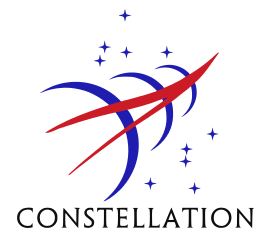Orion abort modes

NASA's newest spacecraft, the Orion Multi-Purpose Crew Vehicle (MPCV), will be the first American spacecraft since Project Apollo to use an escape system in the event of a launch abort, something its predecessor, the Space Shuttle, had for only its first four orbital test flights in 1981-1982. Like the Apollo Command-Service Module (CSM), the Orion CEV will use the Launch Abort System (LAS), a solid-fueled tractor rocket that will be able to pull the Orion crew module away from a malfunctioning Space Launch System (SLS) rocket during the initial launch phase. Based on the launch escape system found on the Soviet/Russian Soyuz spacecraft, the LAS, designed and manufactured by ATK for the Orion CEV, will be larger than the Soyuz version and will have more thrust than the Atlas 109-D booster that carried astronaut John Glenn into orbit in 1962.
The earlier Apollo system had various abort modes depending on altitude, velocity, and other circumstances. Likewise the Orion will have similar modes of operation for its launch performance aborts. Some of these may not use the LAS itself, but would use the second stage of the Ares I, or even the Orion vehicle's own propulsion system (the Aerojet AJ-10 engine) instead.
Initially designed to land on solid ground, like that of the early and current Soviet and Russian manned spacecraft (Vostok, Voskhod, and Soyuz), with a water landing as a backup, in August 2007, NASA tentatively redesigned the Orion for water landings (splashdowns) as the primary mode of landing, with ground landings as the emergency backup . Under the advice of the Exploration Systems Architecture Study (ESAS) report, NASA will most likely develop abort procedures that resemble the abort procedures used on Apollo, but with some procedures carried over from the Shuttle.
Modes
The method of abort, either using the LAS or the second stage of the Space Launch System booster, will depend on how far into the flight the spacecraft and crew are traveling.
Prelaunch
NASA has acquired several MRAPs to station near the launch pad, should there be time for the crew to evacuate the vehicle. One will be occupied by emergency rescue personnel, while the other will stand empty behind a blast shelter at the bottom of several zip-lines.[1]
Mode One
During the first 120 seconds of flight, up to the jettisoning of the solid-fueled boosters at 300,000 feet (91 km), the Orion Crew Module (CM) will separate from the rest of the rocket propelled by the LAS. Unlike the Apollo Launch Escape System, which used a pair of "canards" and the weight of the spacecraft to flip the vehicle over for landing, the Orion LAS has a set of steering rockets that will steer the spacecraft away from the malfunctioning SLS, as well as prepare the spacecraft for both separation and splashdown. The tower will then be jettisoned 14 seconds later and the hypergolic fuel on the Orion CM would be automatically released at a pre-determined altitude.
Mode Two
After the LAS is jettisoned, the Orion Crew and Service Modules (CSM) will separate as a whole from the SLS and either use its large AJ-10 engine or smaller control engines to maneuver from the rocket. Similar to a Space Shuttle Trans-Atlantic (TAL) abort profile, the Orion will use the AJ-10 engine to propel the spacecraft to a desired separation point, in which then the Orion CM would land in either western Spain or Morocco on "due east" (i.e., lunar) flights, or in Ireland or the United Kingdom on ISS-bound flights. A splashdown in the eastern Atlantic Ocean would only be a contingency.
Mode Three
The SLS would propel the Orion CSM into an initial orbit, upon which the spacecraft will immediately separate, and then perform a retrofire that will allow the Orion CM to splashdown in the Pacific Ocean off the U.S. West Coast, or make a ground landing at either Edwards Air Force Base in California or White Sands Space Harbor in New Mexico. This is similar in profile to the Shuttle's "Abort Once Around" (AOA) profile.
Mode Four
If the SLS suffers less-than-ideal performance during the initial orbit insertion, it can be restarted 45 minutes later to place the Orion CSM into a less than ideal orbit that can be corrected with the on-board propellant reserves later in the flight. This is similar to the Shuttle's "Abort To Orbit" (ATO) profile, but depending upon the stable orbit reached, it may require NASA to end the mission with a landing at either Edwards or White Sands within a 24-hour period.
The four abort modes would also be used if the Max Launch Abort System (MLAS), a proposed alternative to the LAS, is flown in place of the LAS. The MLAS, which resembles the LAS, but without the Soyuz-like rocket tower, uses a strengthened boost protective cover, but with the main rockets placed inside of the BPC itself.
See also
References
- Full ESAS report
- August 2007 official NASA document—NASA has not completely abandoned the "land landing" option

